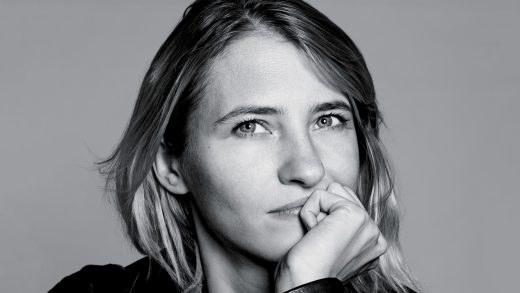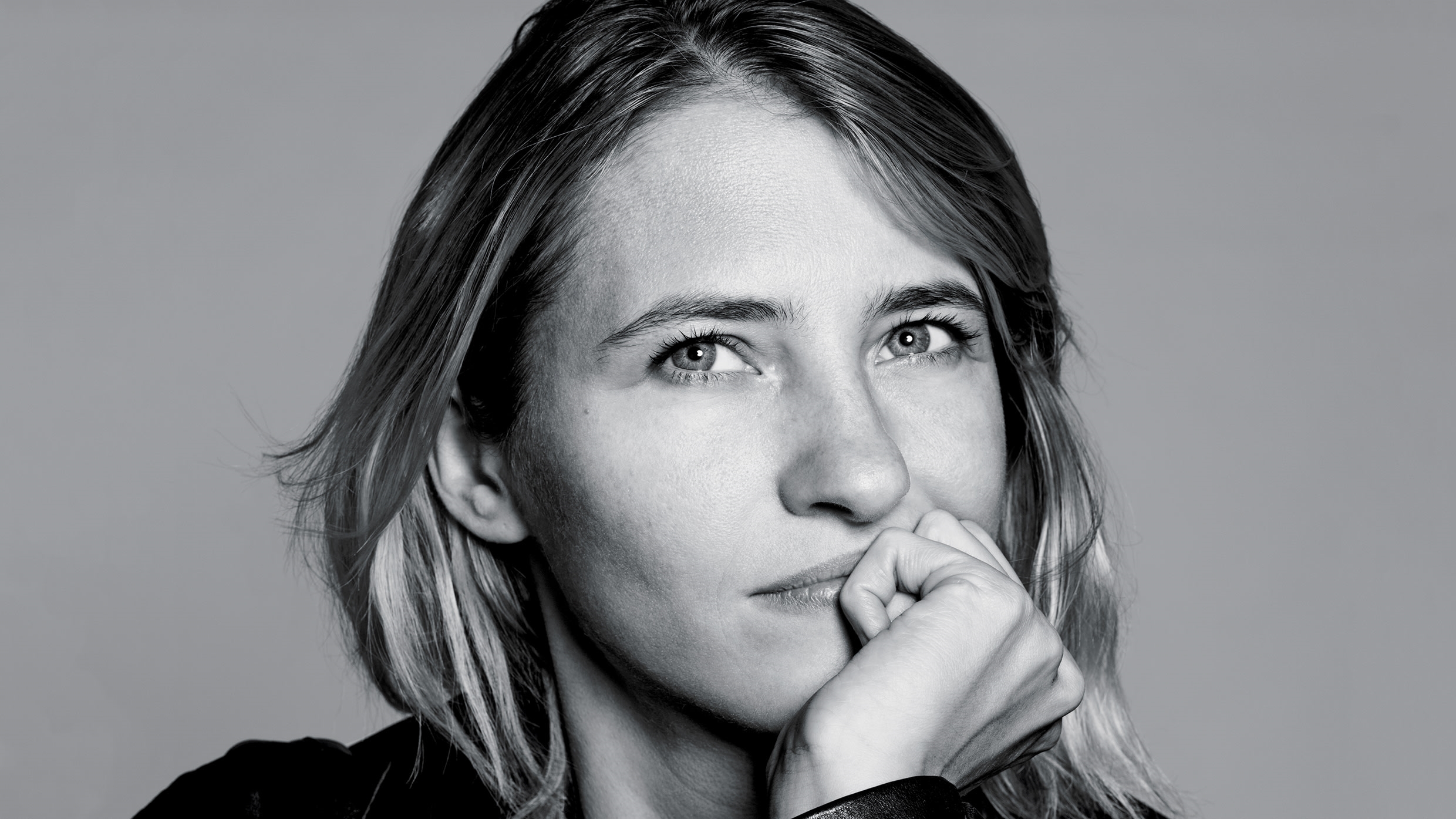The modeling industry is filled with exploitation—this labor activist is fighting back
In her two decades as a professional model—appearing in campaigns for designers such as Stella McCartney and Tommy Hilfiger—Sara Ziff has seen the industry’s glamorous side and its underbelly, which is rife with child labor, low wages, and sexual harassment. Model Alliance, the nonprofit she founded in 2012, advocates for fair labor standards and safer workplaces for models. Under Ziff, the alliance has pushed lawmakers in New York and California to protect underage models, partnered with researchers to study human trafficking and other issues, and launched a high-profile campaign—signed by close to 140 models—to get Victoria’s Secret to commit to safeguarding its models from sexual misconduct. Here, she talks about how modeling agencies have enabled the likes of Harvey Weinstein and Jeffrey Epstein, and why the exploitation of models should concern us all.
Fast Company: Modeling has always seemed so aspirational. But your work—and the Epstein headlines—has pointed out how vulnerable models are. What accounts for this discrepancy?
[Models] are among the least protected workers in the world.”
Sara Ziff: I grew up in New York City and was scouted on the street after school when I was 14 years old. Like many models, I fell into [the career] by accident. For most industries, you train, prepare, and apply for a job that you want. In the modeling industry, you are selected, then thrust into this industry that’s unique. Often, you face adult pressure at a young age. One of the biggest challenges for me [is that] there’s not a lot of sympathy for models. People have heard stories of Linda Evangelista saying she wouldn’t get out of bed for less than $10,000 a day. In reality, the vast majority of working models are not making large sums of money. In many cases they’re young, immigrant women. Many are actually working in debt to their agencies. They are among the least protected workers in the world.
FC: It seems like a lot of the issues we’re grappling with today as a society, such as sexual harassment, are widespread—and acute—in the modeling industry.
SZ: It’s a mistake not to see these issues holistically. People have, for a long time, talked about extreme thinness as a consumer-protection issue, without recognizing that it’s actually a labor issue. [You can] address this problem if you think of it in terms of creating rights and protections for the models themselves, rather than trying to promote healthier images by banning [too-thin] models.
In terms of sexual harassment and assault, it was Ambra [Battilana Gutierrez], one of the models in the Model Alliance, who really cracked that open in the Weinstein story with her police report in 2015. Bill Cosby was basically going through a modeling agency, and they were effectively pimping girls out to him. And Epstein had relationships with modeling agencies that were sending him young women. We’re now starting a Department of Justice–funded study looking at the overlap between the modeling industry and trafficking.
ROLE MODELS: Sara Ziff on five organizations that inspire her work
FC: How does trafficking work in the modeling world?
SZ: Modeling agencies are not licensed, and they’re really not regulated. So there’s a lack of accountability when it comes to how models are treated. Generally, the top-earning supermodels—the top 1%—tend to be treated pretty well. But there’s a lot of exploitation of the average working model.
If you are working in debt to your agency, if you don’t have insight into your finances, if you can’t guarantee that you’re going to be paid within a reasonable period of time, you’re essentially beholden to your agency. We’re seeing a lot of examples of models being sent to what they think are castings or meetings for job opportunities—such as meeting with Jeffrey Epstein, thinking that they’re [attending a] casting for Victoria’s Secret—when in fact they’re being lured into a trafficking situation. In light of the Epstein case, we’ve gotten a lot of inquiries and requests for help from people who are reevaluating their experiences in terms of trafficking. So much of this abuse is normalized, and the industry is so misunderstood, that it’s been hard for people to find their voice.
FC: Soon after you launched, the Model Alliance got New York state to adopt the Child Model Act, which extends child labor laws to models. Are you still focused on getting laws passed?
So much of this abuse is normalized, and the industry is so misunderstood, that it’s been hard for people to find their voice.”
SZ: We started with legislative advocacy, because when we looked at the laws on the books, we found that models were not even covered under labor laws in New York. So we introduced the Child Model Act back in 2013, which established some baseline of protection. We’re now focused on developing our Respect Program, which [will] foster accountability in the industry through legally binding agreements with agencies, publishers, and [fashion] brands to uphold an enforceable code of conduct. We’ll have a standards counsel charged with receiving and following up on complaints, and penalties for violations. If it’s a severe violation, such as a photographer who is sexually harassing or assaulting models, then the companies that are signatories to the program would no longer work with that individual.
FC: Is it hard to get fashion brands to sign on?
SZ: We’re in negotiations with several of them, but it’s not the kind of program that happens overnight. This will fundamentally shift the balance of power and change the way that people do business. We’re hopeful that there will be industry leaders who want to pioneer this effort.
FC: Do you see parallels with what other labor movements are doing?
SZ: Our Respect initiative is modeled after the Fair Food Program, which deals with contract workers in agriculture. They might seem like very different industries, but in both you’re dealing with this fundamental problem of a highly vulnerable, mostly female workforce, who are cut out of a lot of basic protections, whether it’s [around] sexual harassment or timely payments.
FC: What inspired you to take up labor advocacy and form the Model Alliance in the first place?
SZ: When I was 18 years old, I started carrying a camera—really just a shitty little camcorder—and documenting my [modeling] experiences. I also gave cameras to my model friends. It was a very innocent project. I realized, from shows like America’s Next Top Model, that there was an interest in this world, but that people were seeing the Hollywood version of it. That footage became the basis for [the 2010 documentary] Picture Me, which ended up getting a global theatrical release. It was described as an exposé, which it wasn’t intended to be, and I was painted as a whistle-blower.
That was pretty stressful: I went from making good money—which was how I was paying my bills and for college—to pretty much overnight the phone stopped ringing. I approached established unions and asked them if they would extend membership to models. But because we’re generally considered independent contractors, we’re not really able to unionize. I was studying the labor movement at Columbia and took a class in community organizing. My senior thesis [became] a paper laying out my vision for the Model Alliance. People keep saying, “We need a union,” and I keep saying, “There are different approaches to address the same problems.”
FC: Given all that you’ve heard about and witnessed, would you still encourage a young person to pursue a career in modeling?
SZ: The industry has the potential to be a platform for transformative change. If models had basic protections and could work without fear of harassment and abuse, they could be incredibly powerful in terms of using their platforms for good.
A version of this article appeared in the Winter 2019/2020 issue of Fast Company magazine.
Fast Company , Read Full Story
(52)



